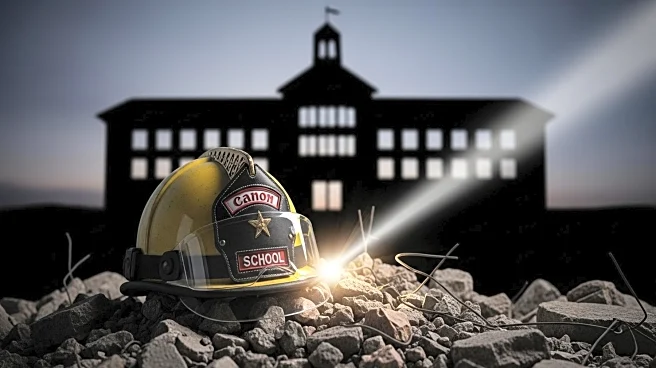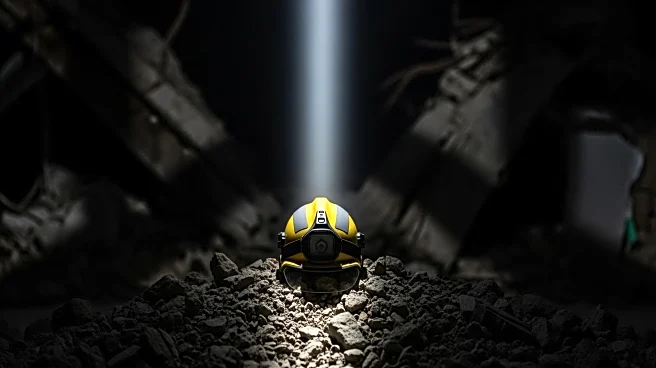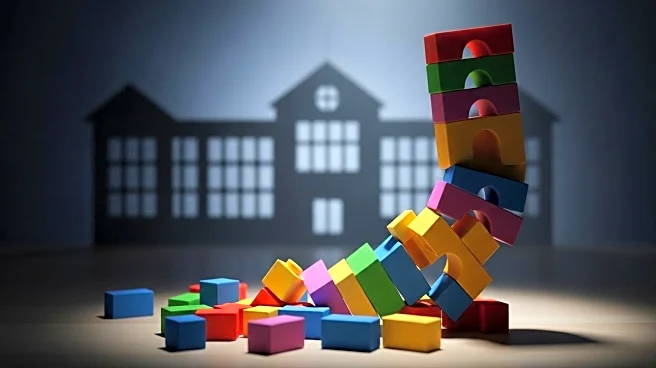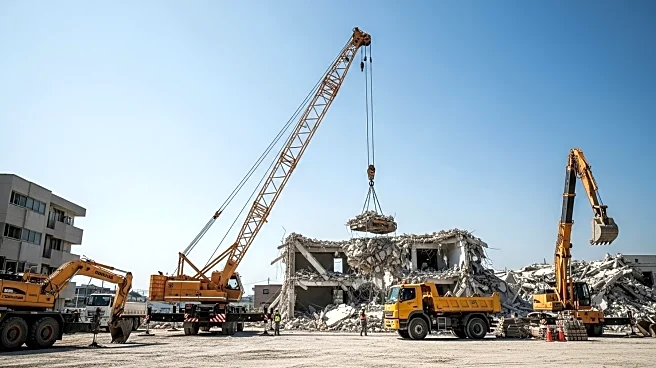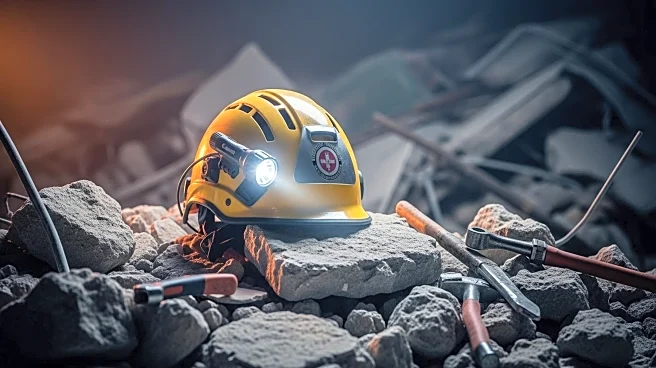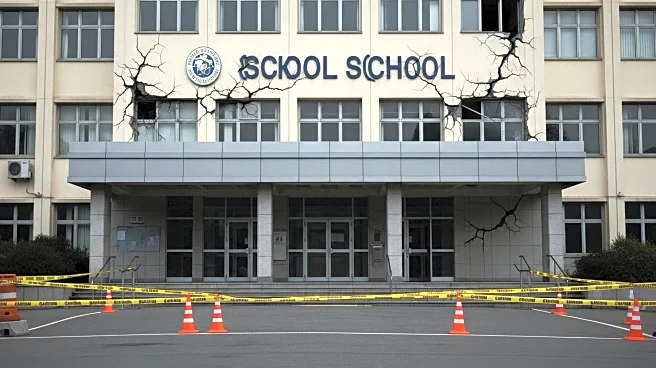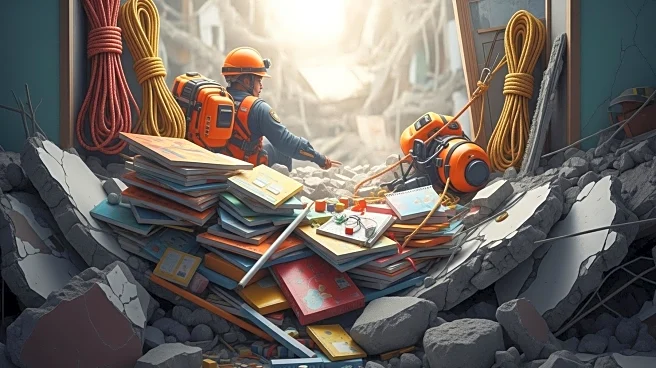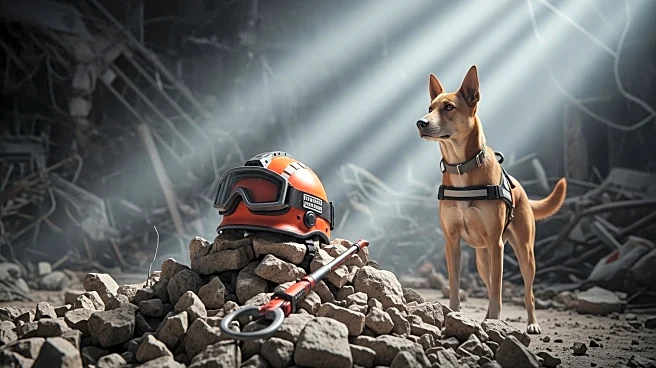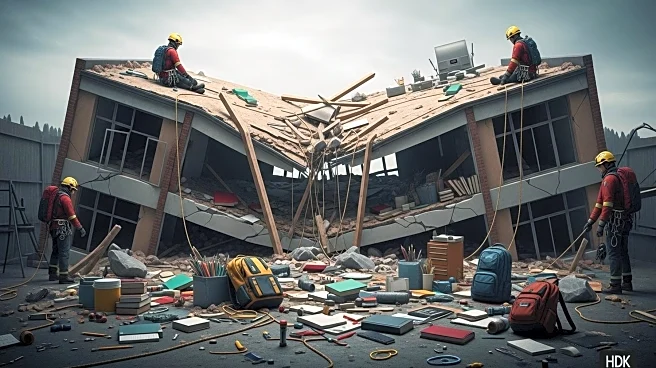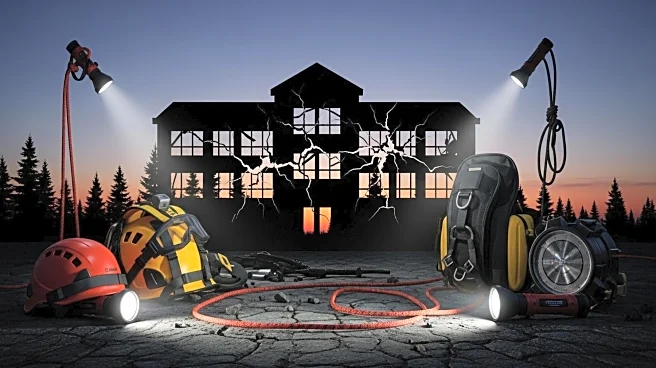What's Happening?
In Sidoarjo, Indonesia, recovery crews are working to retrieve bodies from the rubble of a collapsed school building. The al Khoziny Islamic boarding school, which was undergoing renovations, collapsed on Monday, trapping hundreds of students in a prayer hall. As of Friday evening, the death toll has risen to 10, with more than 50 students still unaccounted for. Rescuers initially worked by hand but have since employed heavy machinery to expedite the search. The collapse occurred during the pouring of concrete for additional floors, which were being added without a permit. Survivors, mostly boys aged 12 to 19, recount the terrifying moments as the building fell, with many suffering serious injuries.
Why It's Important?
The tragic collapse highlights critical issues in building safety and regulatory compliance in Indonesia. The addition of floors without proper permits points to potential negligence and oversight failures, raising concerns about construction practices in the region. The incident underscores the need for stringent enforcement of building codes to prevent future tragedies. The loss of young lives and the impact on the community are profound, prompting calls for accountability and improved safety standards. This event may lead to increased scrutiny and reforms in construction regulations, aiming to protect vulnerable populations such as students.
What's Next?
Authorities are expected to complete recovery efforts by Saturday, with ongoing investigations into the cause of the collapse. The focus will likely shift to accountability, with potential legal actions against those responsible for the unauthorized construction. The incident may prompt government and regulatory bodies to review and tighten building safety standards, ensuring compliance to prevent similar occurrences. Community leaders and families affected by the tragedy may advocate for reforms and support systems to aid recovery and prevent future incidents.
Beyond the Headlines
The collapse raises ethical questions about the prioritization of safety over cost-cutting measures in construction projects. It also highlights cultural dimensions, as the school served as a religious and educational hub for the community. The tragedy may lead to long-term shifts in how educational institutions approach infrastructure development, emphasizing safety and compliance. The emotional and psychological impact on survivors and families will require ongoing support and intervention.

